Our native Ceanothus on the property is currently exhibiting a profusion of bloom. A large specimen tree near the house is all a-buzz with bees. If you stand beneath these trees, there’s a low background audible hum that emanates from above, along with a gentle shower of blossoms and pollen as numerous insects travel between the flower clusters.
Ceanothus thyrsiflorus, also known as Blue Blossom Ceanothus, belongs to the Rhamnaceae (Buckthorn) family, and is a Pacific Coast native, ranging from Santa Barbara County, California, to southern Oregon. In its native habitat, this species favors coastal redwood forest, chaparral, and mixed evergreen forests, or northern coastal scrub.
The name thyrsiflorus, means thyrse-flower, referring to the dense, branched flower cluster; traditionally thyrsus is the name given to the Giant Fennel staff, adorned with ivy, leaves, and berries, topped with a pine-cone, and carried by Bacchic maenads in Greek Mythology.
Ceanothus thrysiflorus is the largest of our native Ceanothus species, often reaching more than 20 feet tall. We’ve observed at least four specimens on the property that exceed 20 feet in height, and numerous younger shrubby vase-shaped specimens.
We’ve noticed on the tree shown above that the deer have done some significant damage, not just from browsing the branches, but also rubbing against the bark.

The trunk of a mature Ceanothus thyrsiflorus shows extensive damage from deer rubbing their antlers against the bark
Although both deer and rabbits are both known to browse the foliage of Ceanothus thyrsiflorus, this tree is fortunately now within the deer fence boundary, behind the vegetable gardens, and hopefully won’t sustain much additional damage.
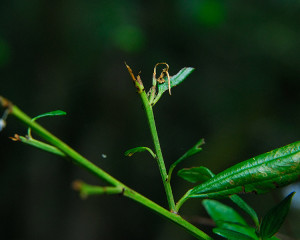
Deer aren't particularly discriminating, and are quite happy to browse the foliage of Ceanothus thyrsiflorus
Otherwise few pests, except occasional aphids, seem to be a problem.
The leaves of Ceanothus thyrsiflorus are evergreen, oblong-ovate, shiny on the upper surface, and typical of Ceanothus they are 3-ribbed from base.
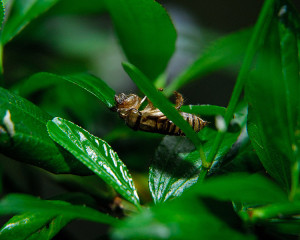
A surprise amidst the foliage of C. thyrsiflorus, the hollow exoskeleton of a Cicada clinging to a leaf
The fragrant flowers emerge between March and June, and are generally a pale blue, with each flower panicle averaging 2-3 inches long.
The flowers persist for a few weeks, attracting all sorts of insects, and spiders.
The tiny fruits form in tight grape-like clusters, and the seeds are released in mid-late summer, almost explosively, and are favored by wildlife. Here the chipmunks on the property have been observed gorging themselves in late summer on the bounty of seeds shed across the deck near the house.
In the few years we’ve been here we’ve noted that the degree of bloom seems variable. Last year the plants produced scant blooms, and few seeds, perhaps as a result of drought, as none of our wild specimens receive any supplemental irrigation. This year however, after a significantly wet spring, masses of flowers are being produced.
Native American tribes, including the Pomo and Kashaya, have traditionally used Ceanothus thyrsiflorus blossoms for ceremonial dance wreaths. They also mixed fresh or dried flowers with water to use as a soap for washing the hands, face and body, and the Polikah tribe would use a decoction of twigs and leaves for washing newborn babies.[1]
Ceanothus thyrsiflorus, unlike some Ceanothus species, is reportedly relatively long-lived, and will tolerate a variety soil types. In hot summer regions these plants do benefit significantly from supplemental irrigation. As we have lost some C. thyrsiflorus in the last couple of years, possibly secondary to drought stress, for those specimens now enclosed within the orchard fence, we will route some drip irrigation to help them during particularly hot dry periods in late summer.
To replace the plants we’ve lost, we’d like to try propagating this plant this fall. The most economical method for propagating Ceanothus thyrsiflorus is from seed. We will wait until the seed clusters ripen on the trees this summer, and try to harvest some seed before the seed capsules explode. As the seeds have a hard outer coat, it is recommended that the seeds first be soaked in a cup of hot water, and left overnight. The seeds can then be sown in flats, and as they grow they can then be transferred to successively larger pots. It is important not to allow the plants to become pot-bound. Alternatively, the seed is held until fall, and sown directly in native soil, where the cool winter nights reportedly help to stimulate germination.
Just because Ceanothus is native to the Pacific west, doesn’t mean you won’t see it elsewhere. “The Royal Horticultural Society of England received seeds of Ceanothus thyrisflorus from Richard Brinsley Hinds, surgeon-naturalist on the expedition of H.M.S. Sulphur, in 1837, making it the first California species introduced into European gardens. It remains common in British Gardens today”[2]
Note that Ceanothus thyrsiflorus is one of hundreds of known host plants for Sudden Oak Death, and its movement may be subject to restrictions in some California counties.
[1] Daniel E. Moerman’s Native American Ethnobotanical Database
[2] Fross, David, and Wilken, Dieter. Ceanothus. 2006. Timber Press, Incorporated.


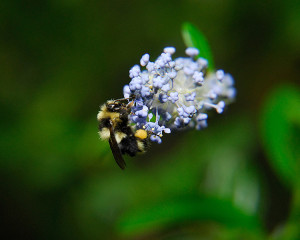
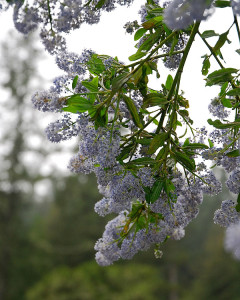

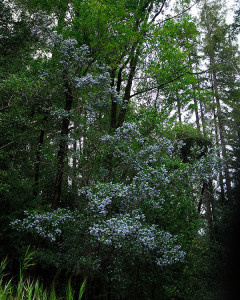
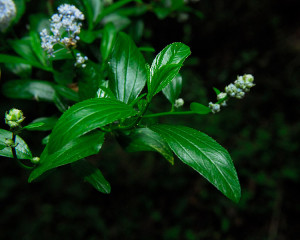
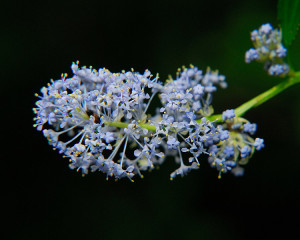
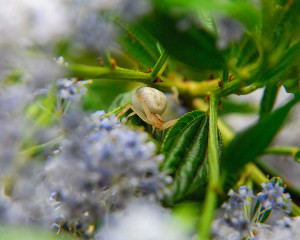

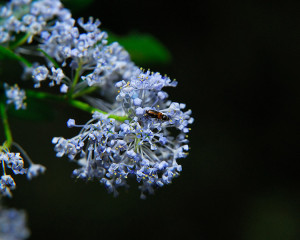
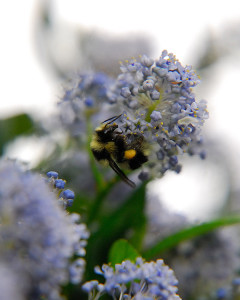
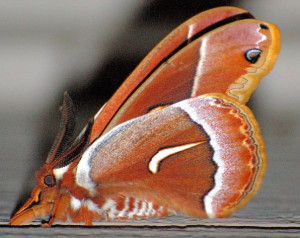
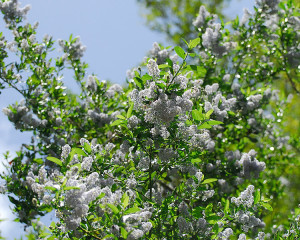
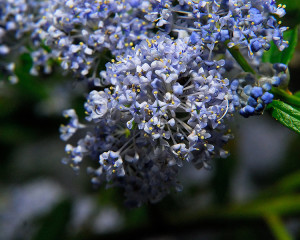
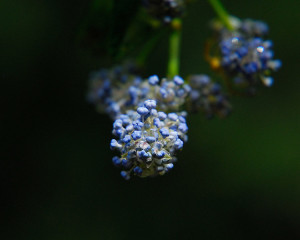








Fantastic, CV! It’s hard to believe what amazing beauties are native to the land there (and here, too, of course). My favorite photograph has got to be the spider having lunch among the blossoms — all that beauty and ruthlessness mixed just gives me shivers. All your photos are well done, though.
I had that experience of the low background hum of bees just this week at the Botanical Gardens, while standing under an enormous cherry tree. It kind of gets under your skin somehow; doesn’t it? I find it a nearly mesmerizing sound.
.-= Meredith´s last blog ..if a tree falls in the forest… =-.
Thanks Meredith…I rather like that snacking spider shot too. I’m just surprised that I always find it lurking on the same branch.
I do love the humming of the bees too. I tried taking the video camera out yesterday to see if I could record how loud it is, but it didn’t quite come across in the video.
tweeted this beautiful article, as per usual beautiful images and well researched.. well done…
.-= Ena Ronayne´s last blog ..Andrea Palladio Exhibition until 26 May 2010 =-.
I absolutely adore Ceanothus. There just aren’t that many plants that exhibit such a stunning flower color. Ours, though not thyrsiflorus, are just about to pop.
I’m always in Awe, when I walk into a place, and hear the audible buzz of the bees doing their job.
.-= eric at my First Garage´s last blog ..Outdoor Living Tour – Austin =-.
I’ve read about this shrub (btw, this post is stellar) and have wanted to see it in bloom~~and yes, I’ve wondered if this Pacific Coast native would tolerate my Mid South garden…I would love it, but it would not be happy here! I will be one of the many admirers from afar! gail
.-= gail´s last blog ..Garden of Benign Neglect =-.
I definitely want to incorporate ceanothus into our tiny yard. But I want to live with the garden a few years before committing. There are so many choices!
Wasn’t this a splendid spring for ceanothus? I was at a native plant sale up at Tilden in Berkeley this weekend, and there were so many choices!
(I did buy two baby redbuds. I just couldn’t resist their charms.)
.-= lisa´s last blog ..Our Taylor Made Hive, part one. =-.
Oh, I had no idea! I actually have C. thyrsiflorus in my back garden, except it’s a low growing version and a late bloomer. But I also get a lot of native bees. Thanks for this article, how interesting! Had no idea where the name comes from.
I was interested to read about this lovely tree. I love the delicate blue color of its blossoms, and I enjoyed your photos of the bees and spider.
.-= debsgarden´s last blog ..A Walk in the Green Woodland =-.
Dear Clare, This is a most interesting account of Ceanothus, a shrub which is highly prized, as you will know, in English gardens. I had not, of course, realised that C. thyrsiflorus grew to tree height – how very splendid that is -nor that there was a Ceanothus Silk Moth.
Unfortunately, I shall not be able to comment or post for the next ten days or so. But, I will return.
.-= Edith Hope´s last blog ..J, An Artist in the Garden =-.
I love seeing Ceanothus in bloom in the chaparral. Interesting post beautiful photos. I wonder if one of those bee photos is of a yellow-faced bumblebee.
.-= Lou Murray’s Green World´s last blog ..Earthquakes, volcanos and food security =-.
Sadly, my bumblebee identification skills are rather lacking. I’m doing well to recognize our Mason Bees amid the hoards of hovering insects. I really should brush up on my bumblebees though…
I have always thought these were the most beautiful plants, of course, I love anything blue. Just wish they were hardy for me.
.-= Deborah at Kilbourne Grove´s last blog ..Spring Forward =-.
Well how can I go on without making a thyrsus for my garden now?! I’m very excited.
Las Pilitas is of the opinion that Ceanothus are short lived because they are often over-watered… although your variety has broader leaves than many other varieties and is probably less drought tolerant. Hmmm.
.-= Christine´s last blog ..Mariposa Lily: An Abrupt End to the Story =-.
I always presumed that the culture of Ceanothus was similar to Oaks. They can take the seasonal rain, but should not be watered in the dry season. M. Nevin Smith in ‘Native Treasures’ however, specifically in regard to C. thyrsiflorus states “in hot-summer areas it requires supplemental irrigation for good health”. We hit over 100 degrees here on more than one occasion last summer, in part I think because we’re mostly above the fog-belt. I could see how just a little water in the dry summers, especially toward the end of the season, might be beneficial.
Beautiful photos and as always so informing. I love the link to Mythology and the thyrse clusters are like blue lace. Gorgeous tree!
.-= Carol´s last blog ..April Garden Bloggers Bloom Day and Blooming Friday! =-.
Ceanothus are great! Love your photos with the bees. I have a Ceanothus griseus var. horizontalis ‘Yankee Point’. It was planted 1 1/2 years ago and is really taking off now! I had to prune it back so it doesn’t cover the sidewalk. Lots of light blue blooms…
.-= Jackie´s last blog ..Harvest Monday – April 19, 2010 =-.
What a gorgeous tree and blossoms! Fun, too, that it attracts so many visitors. Lovely post…I don’t see this tree in FL..although it reminds me a bit of a crape myrtle or a lilac bush.
.-= kimberly´s last blog ..Pot Luck =-.
Good observation. I should have mentioned above that Ceanothus are commonly referred to as ‘Wild Lilacs’.
Any plant with blue flowers is sure to be a favorite of mine. I love the lovely light blue coloring especially.
.-= Noelle / azplantlady´s last blog ..A Farm, Flowers and a Restaurant in the Midst of Suburbia =-.
I adore the emergence of ceanothus, seeing them in bloom as I drive around the region. A plant I’ve never grown, and really have not the space or conditions for, but I’m so glad that they are so popular. Yes, California lilacs are one of the best things about this time of year!! Alice
aka Bay Area Tendrils
.-= Alice Joyce´s last blog ..Cherry Blossom Cascade .. Brooklyn Botanic Garden =-.
Plants with blue flowers are my favorite for sure.
I like your blog very much, great work 🙂
marinela x x
.-= Short Poems´s last blog ..A living doll that wants to live =-.
The ceanothus in general seem to be having a great bloom year. Awesome post. I saw tree-like ceanothus with pale blue flowers on my hike on Mt. Diablo, so now I think it might have been this one. I was wondering. I had never noticed the three main veins on the leaves. Great, informative post.
.-= Brad´s last blog ..Mt. Diablo Wildflowers =-.
What an interesting post and what beautiful photos…you managed to get a piccie of the bees eventually then. I do wish our ceanothus hadn’t died, I miss it alot and so do the bees. It is lovely to see pictures of it in it’s native environment.
Hi there and thanks for you fav on Blotanical.. How lovely to read this post.I love ceanothus and it’s such a good bee plant..It needs to go on my ever expanding list!